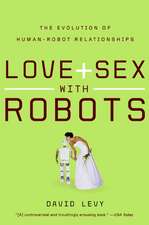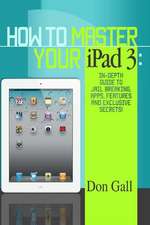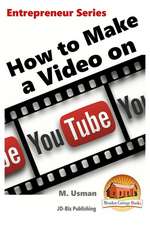Library Blogging
Autor Karen A. Coombs, Jason Griffeyen Limba Engleză Paperback – 30 apr 2008 – vârsta până la 17 ani
Preț: 235.50 lei
Preț vechi: 288.13 lei
-18% Nou
Puncte Express: 353
Preț estimativ în valută:
45.06€ • 47.05$ • 37.21£
45.06€ • 47.05$ • 37.21£
Carte tipărită la comandă
Livrare economică 15-29 aprilie
Preluare comenzi: 021 569.72.76
Specificații
ISBN-13: 9781586833312
ISBN-10: 1586833316
Pagini: 168
Dimensiuni: 152 x 229 x 10 mm
Greutate: 0.25 kg
Editura: Bloomsbury Publishing
Colecția Linworth
Locul publicării:New York, United States
ISBN-10: 1586833316
Pagini: 168
Dimensiuni: 152 x 229 x 10 mm
Greutate: 0.25 kg
Editura: Bloomsbury Publishing
Colecția Linworth
Locul publicării:New York, United States
Notă biografică
Karen A. Coombs serves as the Head of Web Services at the University of Houston Libraries. Jason Griffey is an assistant professor, Reference & Instructional Technology Librarian at Lupton Library, University of Tennessee @ Chattanooga.
Recenzii
.For those in a school setting, this slim volume provides not only the foundation (by defining blogging, providing examples, and giving the rationale for the necessity of having one in an academic setting), but also the nuts and bolts for creating and hosting school library blogs. The authors give basic information, so even novices will be able to understand not only the terminology, and be able to differentiate types of blogs, but will also gain skills in setting them up.
This is a very informative book for librarians who want to know about blogs, whether they are beginning bloggers or someone who plans to set up a library blog. The detailed directions are easy to understand and follow. Numerous examples provide even a casual reader with knowledge they can use. Many examples of how blogs are used in libraries, both for internal and patron use, at all types of libraries are provided in the book. In many cases, a screen shot is shown and the URL is given. These links are very helpful in understanding what outstanding library blogs look like. Technical information about how to set up and maintain a weblog is given, including different types of tools that can be used for creating blogs. There is also information about the ways a blog can be hosted, including costs and how to find free blog hosting sites. The related technologies that are available to use in a blog and how to use them are described. Because of its organization and clear headings, this book is a valuable resource for anyone who wants to know more about blogging. Recommended.
Blogging is an increasingly popular way for libraries to announce and promote events and news, highlight new titles and materials in their collections, publish book reviews, and interact with and engage patrons in dialogue. Library Blogging is not only an easy to understand how-to guide that helps get libraries up to speed on blogging, but it also discusses reasons for blogging, as well as providing both real-world and inspirational examples. It includes well-illustrated examples and instructions, tips, and pointers, providing step-by-step instructions and help for libraries starting up a blog. Library Blogging includes information about the software needed to set up a blog, as well as a focus on best practices and expectations. This is an excellent introduction to blogging, especially as it relates to libraries, and will be of interest to any library staff interested in blogging by libraries or in starting their own library blog. Recommended for all libraries.
This is a very informative book for librarians who want to know about blogs, whether they are beginning bloggers or someone who plans to set up a library blog. The detailed directions are easy to understand and follow. Numerous examples provide even a casual reader with knowledge they can use. Many examples of how blogs are used in libraries, both for internal and patron use, at all types of libraries are provided in the book. In many cases, a screen shot is shown and the URL is given. These links are very helpful in understanding what outstanding library blogs look like. Technical information about how to set up and maintain a weblog is given, including different types of tools that can be used for creating blogs. There is also information about the ways a blog can be hosted, including costs and how to find free blog hosting sites. The related technologies that are available to use in a blog and how to use them are described. Because of its organization and clear headings, this book is a valuable resource for anyone who wants to know more about blogging. Recommended.
Blogging is an increasingly popular way for libraries to announce and promote events and news, highlight new titles and materials in their collections, publish book reviews, and interact with and engage patrons in dialogue. Library Blogging is not only an easy to understand how-to guide that helps get libraries up to speed on blogging, but it also discusses reasons for blogging, as well as providing both real-world and inspirational examples. It includes well-illustrated examples and instructions, tips, and pointers, providing step-by-step instructions and help for libraries starting up a blog. Library Blogging includes information about the software needed to set up a blog, as well as a focus on best practices and expectations. This is an excellent introduction to blogging, especially as it relates to libraries, and will be of interest to any library staff interested in blogging by libraries or in starting their own library blog. Recommended for all libraries.


























